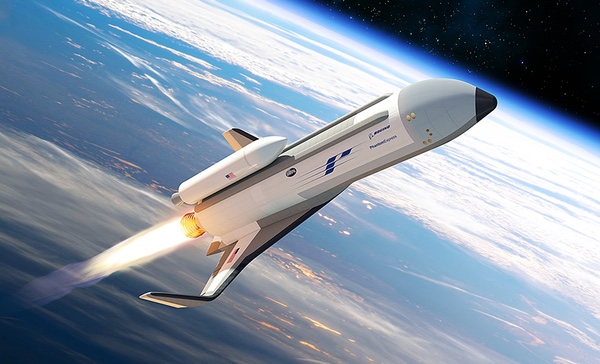The end of a very long honeymoonby John Hollaway
|
| Yet the Phantom Express does not represent anything more than an incremental improvement on well-established options. The reusable SSTO remains a mirage. |
The best minds in aerospace have not been able to improve on this technology, which was developed by Werner von Braun in the 1940s. As many readers know, the root of the problem is a law that was first enunciated by a Russian in 1902, Tsiolkovsky’s rocket equation. In what has been called “the tyranny of the rocket equation,” this limits the amount of payload that a given vehicle can carry, because more propellant increases the overall weight, and so increases the fuel consumption. With about 2.4 tons of oxygen needed for every ton of kerosene (8 tons with liquid hydrogen) the weight of the rocket that is not fuel or oxygen is limited to about 10 percetn of the total, meaning that the payload is usually well under a twentieth of the total. It is a dangerous, expensive, and hopelessly inefficient system.
Rocket scientists know this, and their dream has been to create a space launch vehicle that is a rapier rather than a battering ram, a reusable single stage to orbit (SSTO) vehicle. But this is a mirage that has always eluded scientists, and the latest attempt has proved to be yet another damp squib.
The XS-1 program of DARPA began in 2015. It encompassed the competitive development of reusable vehicle, based on the fact that not only does the existing technology make current space launch vehicles very expensive but they also have little flexibility, and satellite users have to book them many months—years, sometimes—in advance.
However, the winning XS-1 proposal, Boeing’s Phantom Express, is a predictable design, continuing to use the technology that has evolved from the Nazi V-2 rockets. The key value for the power of such rockets is the specific impulse (Isp), measured in seconds; the higher this value, the more powerful the thrust. The alcohol/liquid-oxygen combination of the V-2 gave an Isp of about 200. With kerosene as fuel this goes up to 250, but the highest value for chemical engines, 450, is obtained with liquid hydrogen, and to meet the challenges of creating a successful reusable vehicle, that is what the Phantom Express will use. No surprises.
Another two years will pass before it actually flies for the first time. Yet the Phantom Express does not represent anything more than an incremental improvement on well-established options. The actual payload is inserted by a small expendable rocket atop the booster. This is not a breakthrough. The reusable SSTO remains a mirage.
Attempts to alleviate the constraints of the rocket equation has driven rocket sizes upwards, and yet the miniaturization of satellite technology has meant that payloads are becoming smaller and smaller. There is a massive disconnect developing between the vehicles and their market. Is space exploration, beyond launching ever-smaller satellites and flying research projects, approaching a dead-end?
